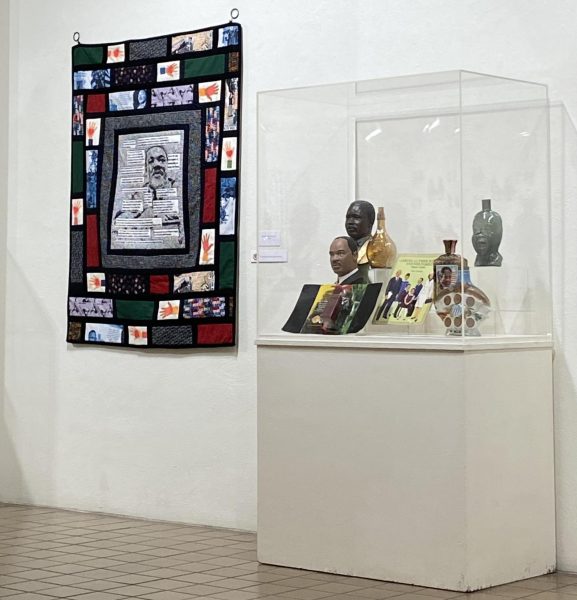Snowmagedon 2021: How the recent winter weather has affected millions across the U.S.
March 10, 2021
Americans are finally beginning to recover after several states faced unprecedented winter weather that left thousands without power.
The weekend of Valentine’s Day brought a lot more than just flowers and chocolates to Americans across the country. Ice storms, snowstorms, and record low temperatures ravaged many Mid-Western and Southern states including Ohio, West Virginia, Kentucky, and Texas.
As more than a third of the continental US recorded below-zero temperatures on Monday, Feb. 15, many individuals were left without heat. The brutal cold and extreme winter storms were enough to cause several states across the U.S. to declare a state of emergency.
Thousands were left with no power, heat, or water for days and some still have not regained power after a week since the ice storms first hit. West Virginia reported approximately 97,000 outages, causing millions to be left without power which was more than any other state. These outages forced individuals to take drastic measures in order to stay warm. For days, families huddled together in a single home to stay warm, individuals used their cars as their only heat source, and neighborhoods shared water due to frozen or busted pipes. Homeless shelters reached max capacity in order to keep those who had nowhere to go, safe and warm during these trying times.
Every winter, it is a guessing game for mid-westerners when trying to predict what type of weather the season will bring. Some winters are milder than others with little-to-no major snow accumulations while other winters, like the one this year, bring frigid temperatures and large amounts of snow. Mid-westerners got their first taste of the harsh and cold winter ahead of them on Dec. 24, 2020. For years, mid-westerners in states such as Ohio and West Virginia had not experienced what they would call a “white Christmas” and in fact, temperatures on the previous Christmas had been in the upper 50s and 60s.
This drastic change in weather patterns is pretty typical for those living in the mid-western states, but for other states like Texas, this type of weather was very unusual and posed a huge threat to those living in the Lone Star State. Texas is known for its warm climate and rather mild winters when compared to northern states. The winter storm came as a surprise and Texans were not prepared for the brutal weather that was to come or the effects that it would have.
On Friday, Feb. 12, Gov. Abbott declared a state of emergency for Texas in preparation for the dangerously low and unusual temperatures heading their way. Some cities like Dallas, San Antonio, and Austin, experienced historically low temperatures in the singles digits. These temperatures were unlike anything they had seen in decades.
Approximately 2.3 million power outages occurred across the state of Texas, leaving millions of businesses and households without power for several days. Texas is still trying to recover from the frigid cold with help from the national government after the state issued a disaster declaration.
So, where did this crazy weather come from?
The recent fluctuating and unusual weather patterns have sparked even more conversations about climate change and the challenge of combating it. According to NASA, climate change is a long-term change in the average weather patterns that have come to define Earth’s local, regional and global climates. Climate change has been a frequent topic of conversation within recent years in light of the wildfires that raged across the U.S. and Australia, earthquakes, hurricanes, and other natural disasters occurring across the globe.
There has been much talk about how the U.S. is fighting climate change. The Biden administration recently entered the U.S. back into the Paris Agreement after having left the agreement during the Trump administration. The Paris Agreement is a legally binding international treaty on climate change. The main objective of the agreement is to limit global warming to below 2 degrees Celsius (35.6 degrees Fahrenheit) and achieve a climate-neutral world by the middle of the century.
Some argue that what the leaders are doing is not enough, while others believe climate change is a hoax. While the opinions of individuals may vary, the natural disasters that the U.S. and other countries have faced within the past several years have been on the rise which is reason for concern among scientists.
While scientists say we can stop global warming, it cannot happen overnight, or even within the next several decades, possibly even centuries. Even if all human emissions of heat-trapping gases were to stop today, Earth’s temperature would still continue to rise, but not forever. Slowing the rate and limiting the amount of global warming by reducing human emissions of heat-trapping gases and soot is imperative in fighting climate change before it becomes irreversible.
The outlook may seem grim, but scientists are confident that it can be done if only everyone does their part. It is always a good idea to go green when you can. This could mean something as simple as recycling, carpooling when possible, shopping sustainably, and reducing the amount of running water you use.





